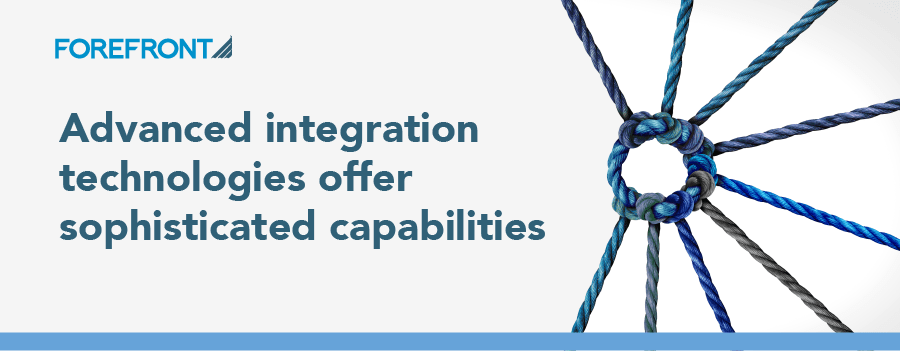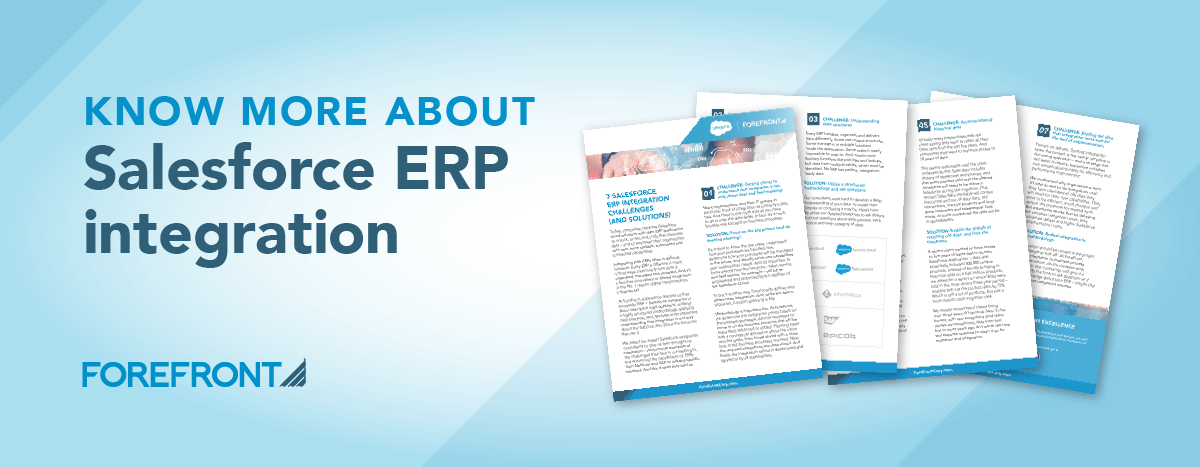
Expert Insight: 10 Things About Middleware You Should Know
By Rajinder Jagga, Integration Manager | Carl Weiss, Senior Director of Technology and Integration
Let’s start by defining middleware: It is software that two or more applications use to communicate and connect with each other. At the same time, it orchestrates the movement of data, and translates and reformats data into shared, interchangeable formats.
Having these advanced integration technologies and sophisticated data management capabilities offers significant advantages, makes complex projects possible, and helps ensure the success of your project.
Here are 10 things you should know about middleware:
1. Middleware makes it possible to avoid custom development
This is smart for several reasons. First, it’s expensive to do custom development, and maintaining it is an even bigger cost. And second, you need to retain a resource who knows the app, understands its code, and knows how to maintain and modify it. And then, if that person leaves your organization, you have a big problem. Third, middleware makes it easier, simpler and faster to make upgrades. With the endpoints configured in the middleware, you generally don’t need to manage session state and data-chunking. Don’t leave a custom developed mess for your future IT team.
2. Middleware enables centralized logging
With middleware, monitoring all your integrations are handled by one system. Without it, if you’re connecting to 10 applications you have 10 disparate logs with uncorrelated, unrelated data. With it, all your logs are captured and kept in one location – handled by native features. And, you get auditing and other functions you will need to satisfy compliance requirements.
3. Middleware improves agility and enables rapid innovation
Middleware implementation takes less time than custom development. Today, businesses need to shorten their product development cycles. And so, middleware makes it possible to bring innovative products and services to the market faster.
4. Middleware reduces costs now and in the future
Because of the use of common components, it requires less effort to develop custom applications, add new processes or make changes within middleware technologies. Which can result in significant reductions in both development time, and testing, which can reduce project costs. Also, maintenance costs are considerably less when teams do not have to do custom development within ERPs and other applications.
5. Middleware boosts security and governance
Middleware provides enterprise-grade security and top-level governance to all your integrated systems. It ensures you comply with auditing and logging requirements. And it guides deployment, handles change control, and tracks change history.
6. Middleware eliminates manual tasks
Middleware not only synchs data between applications, it automates mundane, manual and time-consuming tasks, and gives you the ability to schedule jobs and batches to run automatically.
7. Middleware communication protocols differ
Communication protocols affect which integrations work with the product. Match your needs to the capabilities of your middleware. For example, if you expect a lot of EDI development, you need a middleware with an EDI connector.
8. Middleware can have data limits
Many cloud middleware technologies and some APIs limit the number of records you can process within a given time period. If you are dealing with a migration project or expecting higher record volume through your integrations, it’s good to know if this will come into play – and how much will you be charged if you go over those limits.
9. Middleware logging capabilities are critical
Error logging is a crucial part of integrations. And mature logging capabilities help debug issues faster and rely less on developers to fix the issue. It’s important to determine if a middleware provides appropriate logging capabilities or whether you will need external tools for good error handling.
10. Middleware improves the odds of success
Custom development is risky. Middleware leverages proven pre-built and reusable components, which helps ensure that your integrations are done correctly – and that your solution is successful. Also, it makes it easier to navigate through complex logic, to sequence integrations and to accommodate unforeseen and last-minute changes. And it allows scaling to support changes in business needs with its ability to distribute load across different servers.
Want to know more?
For information on how your Salesforce project can benefit from middleware, contact Chris Cook at ccook@forefrontcorp.com.







